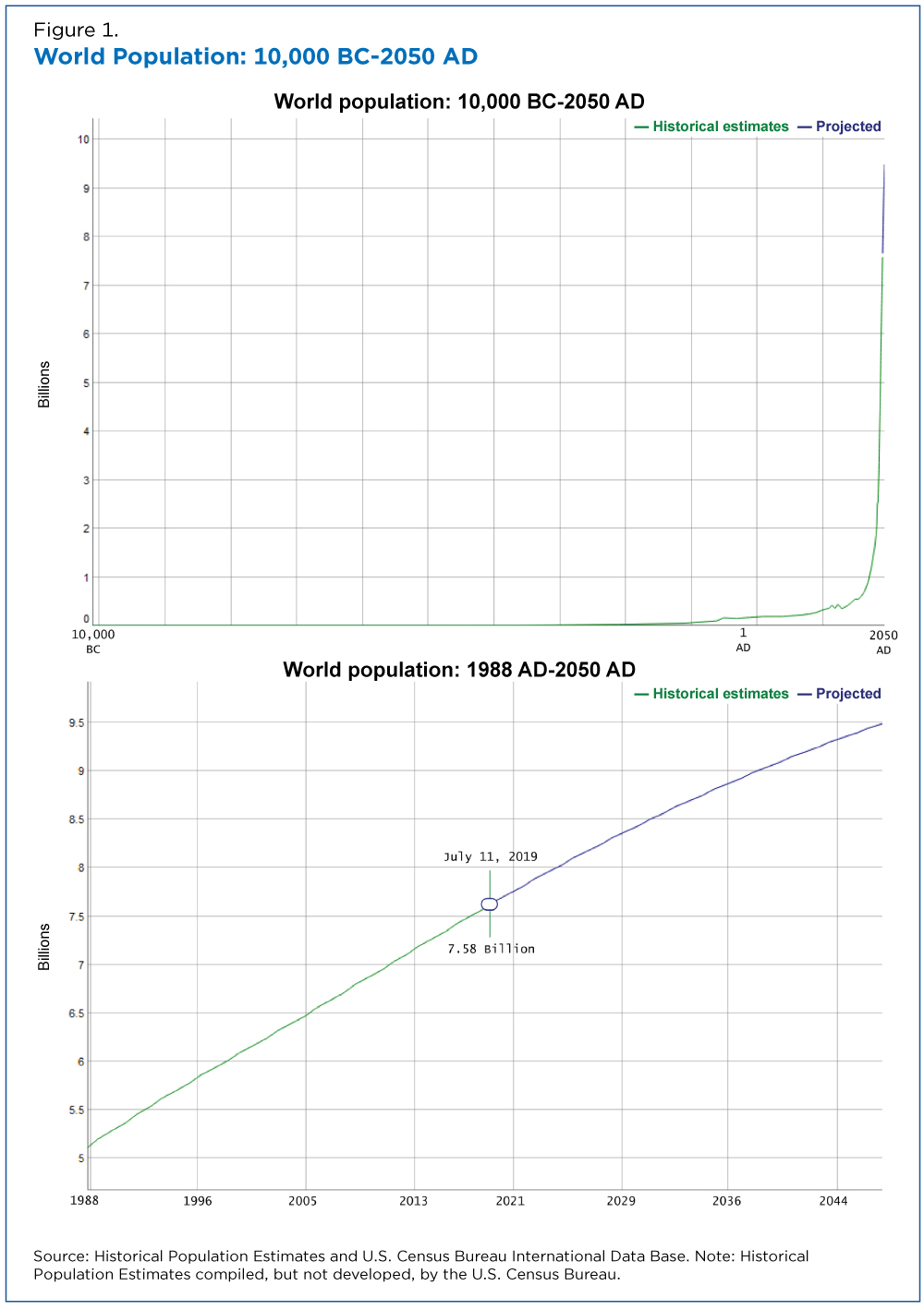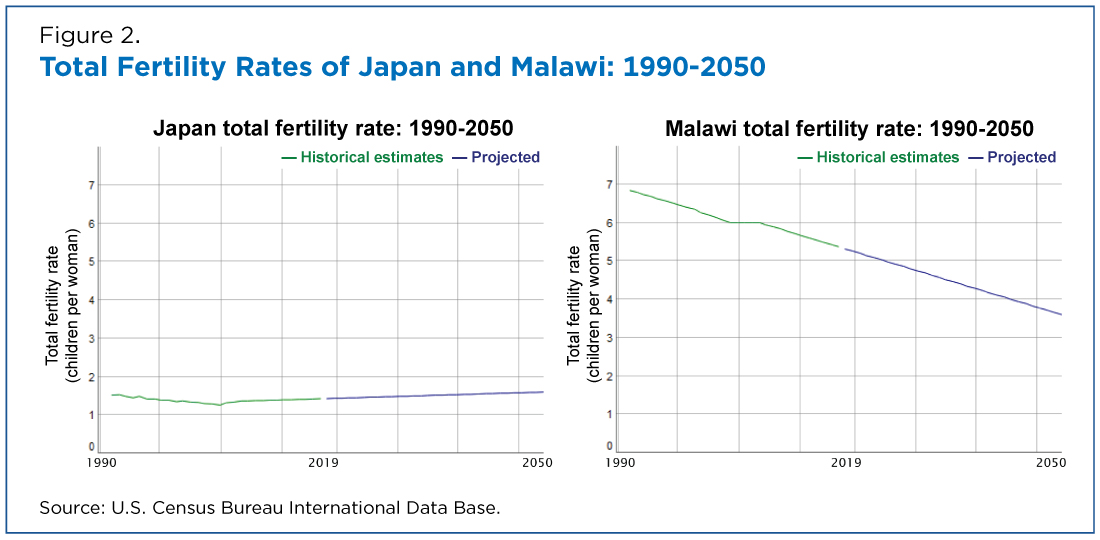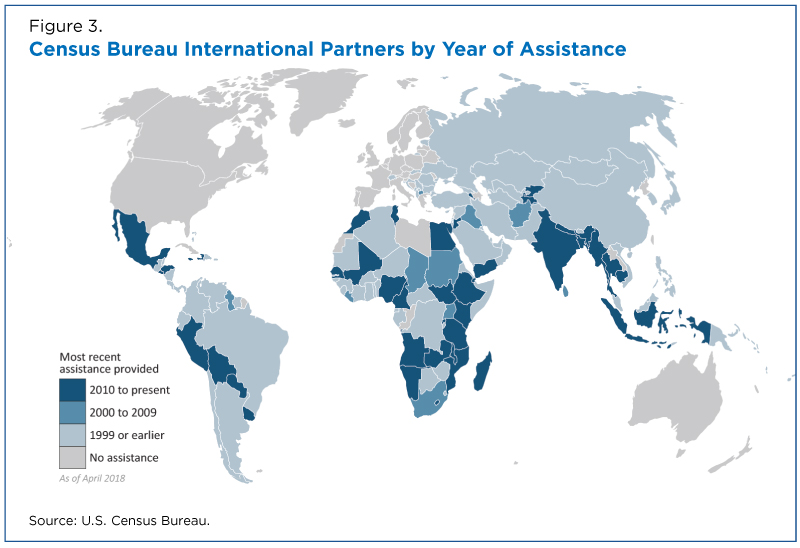World population is estimated to reach 7.58 billion this month as World Population Day is celebrated on July 11 but the U.S. Census Bureau is projecting another milestone: Annual population growth will slip under 1.0% in 2020-2021 for the first time since 1950.
The United Nations declared July 11 as World Population Day in 1989, two years after world population crossed the 5 billion mark.
The U.S. Census Bureau’s International Data Base, which estimates that 7.58 billion people will be on the planet on that day, shows that world population increased by more than 50% in the 32 years since the Day of Five Billion in 1987 (Figure 1).
Now, the Census Bureau shows how we got here and what’s ahead.

The Road to 7.58 Billion
From 10,000 BC through the early 1800s, the world population stayed below 1 billion globally. By the 20th Century, population totals soared (Figure 1), more than doubling between 1920 and 1980 from fewer than 2 billion people to almost 4.5 billion in 60 years.
While this growth has been rapid, annual global population growth rate actually peaked in the early 1960s at 2.2%. It has since gradually begun to decline.
In fact, the Census Bureau’s International Data Base projects 2020-2021 to be the first year since 1950 where the annual population growth rate will drop below 1%. That number is expected to continue to drop.
Fertility Rates Dropping Worldwide
While specific numbers and trends vary between and within nations, Total Fertility Rates (TFR), the average number of children a woman is expected to have, are generally dropping around the world.
Even regions that have traditionally had high population growth are showing similar trends. Their populations are still growing but at a continually slowing pace. In Malawi, for example, the TFR has been dropping for the past 10 years.
In countries like Japan, which have long had declining rates of population growth, the TFR has been below the replacement rate of 2.1 (enough to replace the mother and father in the population) for decades (Figure 2).

How We Keep Track of World Population
Much of the data that allows scientists to study these trends is drawn from national surveys and censuses facilitated through the work of the International Programs team at the Census Bureau.
While the Census Bureau is the leading provider of quality data about the people and economy of the United States, an important part of its mission is to share its expertise globally.
World Population Day provides an occasion to highlight the Census Bureau’s work to improve population data for enhanced decision-making around the world.
One of the ways the Census Bureau shares its expertise is by assisting national statistics offices (NSOs) in developing countries.
Through the support of the U.S. Agency for International Development (USAID), the Census Bureau has been able to work with over 100 countries during the last seven decades to collect and disseminate more accurate and timely population data (Figure 3).
More than 10,000 individuals have participated in its training and capacity-strengthening programs.

